KITSON - STILL
Hybrid engines and bi-mode locomotives are nothing new. One of the most notorious examples of early experimentation into multiple fuels and ways of driving a locomotive was the Kitson-Still locomotive of 1928. Today largely forgotten, was this one-off 262T a total failure, or simply ahead of its time?
WORDS: ANTHONY DAWSON

Main line steam came to an end in August 1968, rather later than many railway engineers had predicted at the start of that century. Around 1900, Francis Webb of the LNWR stated that the West Coast Main Line would be electrified within the next 10 years, while Vincent Raven made more concrete plans for the electrification of the East Coast Main Line between Newcastle and York, and Newcastle and Carlisle, and even built a locomotive.
But their hopes would take much longer to fulfil, largely thanks to the impact of the First World War and the Great Depression. How Britain’s railways eventually divested themselves of steam was the result of decades of political wrangling and engineering development, sometimes leading to dead ends and much wasted money on the way. One such dead end was the Kitson -Still locomotive.
Internal vs external
Anyone who has stood next to a steam locomotive, or has worked on one, will know how hot they are. This is because, even with the boiler lagged, heat is still lost through thermal radiation. The external combustion engine is notoriously inefficient. Fuel is burned outside the engine – in the case of a steam locomotive, to boil water which makes steam. Heat, and thus energy, is lost at multiple stages, and doesn’t do any useful work of driving the engine.
Indeed, a reciprocating simple expansion non-condensing steam engine has an efficiency of between 1% to 7% at best. This is because the steam only pushes the piston once before it’s exhausted up the chimney; it has not given up all its energy, and like most of the heat from the fire, goes to waste. Energy is also lost through mechanical losses in converting the reciprocating motion of the piston in the cylinder to the rotary motion of the wheels.
Conversely, internal combustion engines burn their fuel inside the engine, usually in a cylinder which means more of the fuel is available to do work – invariably, push a piston up and down, just as the steam does in a steam engine. This makes them much more fuel efficient, from 11% to 45%. Even the least efficient petrol engine is more fuel-efficient than a steam engine.
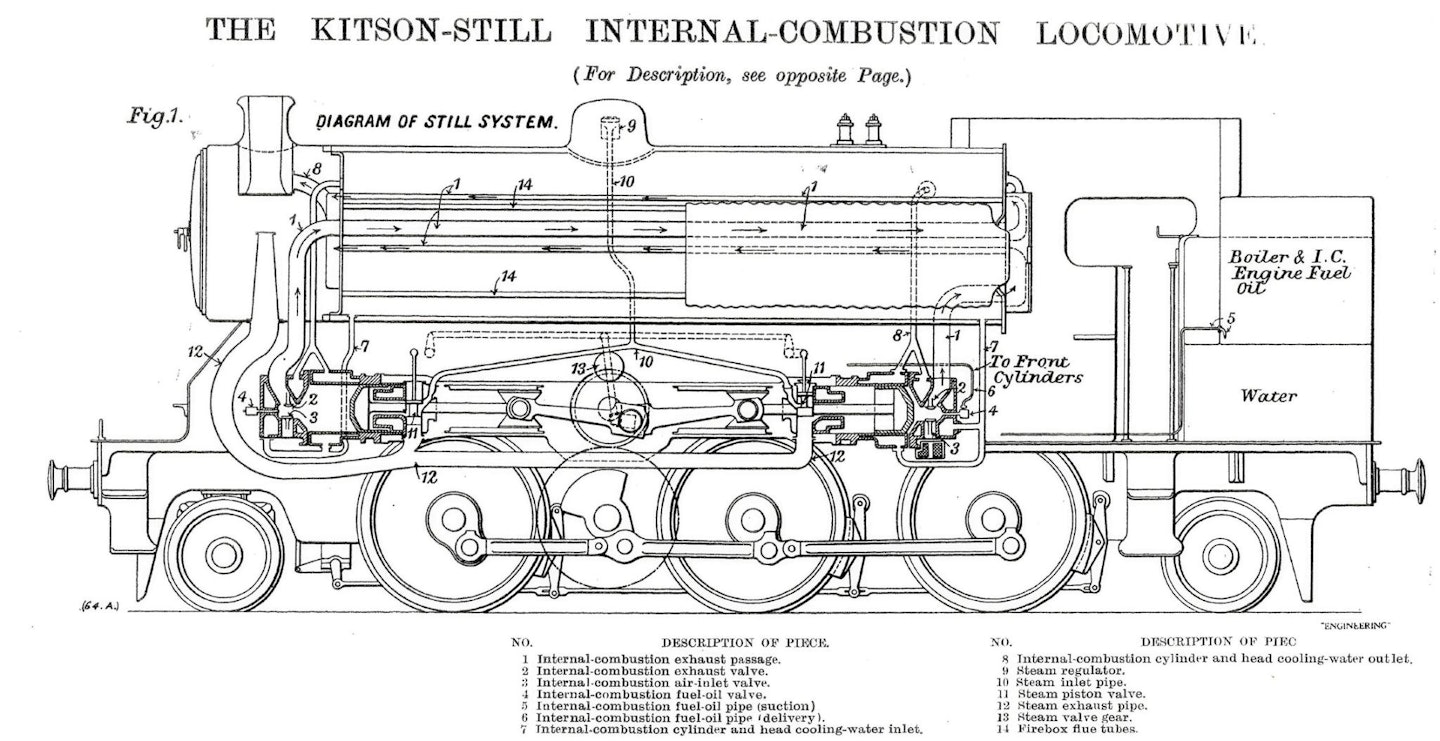
Although the first known practical usage of an internal combustion engine goes to the Franco-Swiss engineer Francois Isaac de Rivaz in 1804, it is arguably German inventor Niklaus Otto who is best remembered for his work with internal combustion engines, developing the four-stroke cycle in 1876. The four-stroke cycle works like this: admission, compression, power, exhaustion. Or: suck, squeeze, bang, blow. The four-stroke cycle increased the efficiency and power output of the internal combustion engine.
Two main types of internal combustion engines were developed: petrol and diesel, the latter developed by Rudolph Diesel. Both work on the four-stroke cycle devised by Otto but differ in how the fuel is ignited to create the power stroke. With a petrol engine, an electric spark is used, but in the diesel engine the air in the cylinder is compressed, and as it is compressed it heats up to a high temperature, at which point the fuel is injected and immediately combusts, providing the power stroke. Diesel engines have a drawback in that they tend to be larger and heavier than petrol engines, offset by being far more fuel efficient. Diesel has a higher calorific value than petrol which means engines need less fuel to operate, but how they use the fuel is more efficient as well. Diesels also tend to have a higher torque which makes them excellent for moving heavy loads. Plus, the lack of an electrical system can make them more robust and reliable.
Compared to steam engines, which require hours to warm up and raise steam, as well as the filthy process of disposal at the end of the day, internal combustion engines offer virtually instant power. They also only really need one operator: there’s no need for a driver and a fireman. How these engines power the wheels varies. The final drive from the wheels can be mechanical-electrical, where the engine is coupled to a generator which provides current for electric traction motors; or hydraulic, using a torque converter.
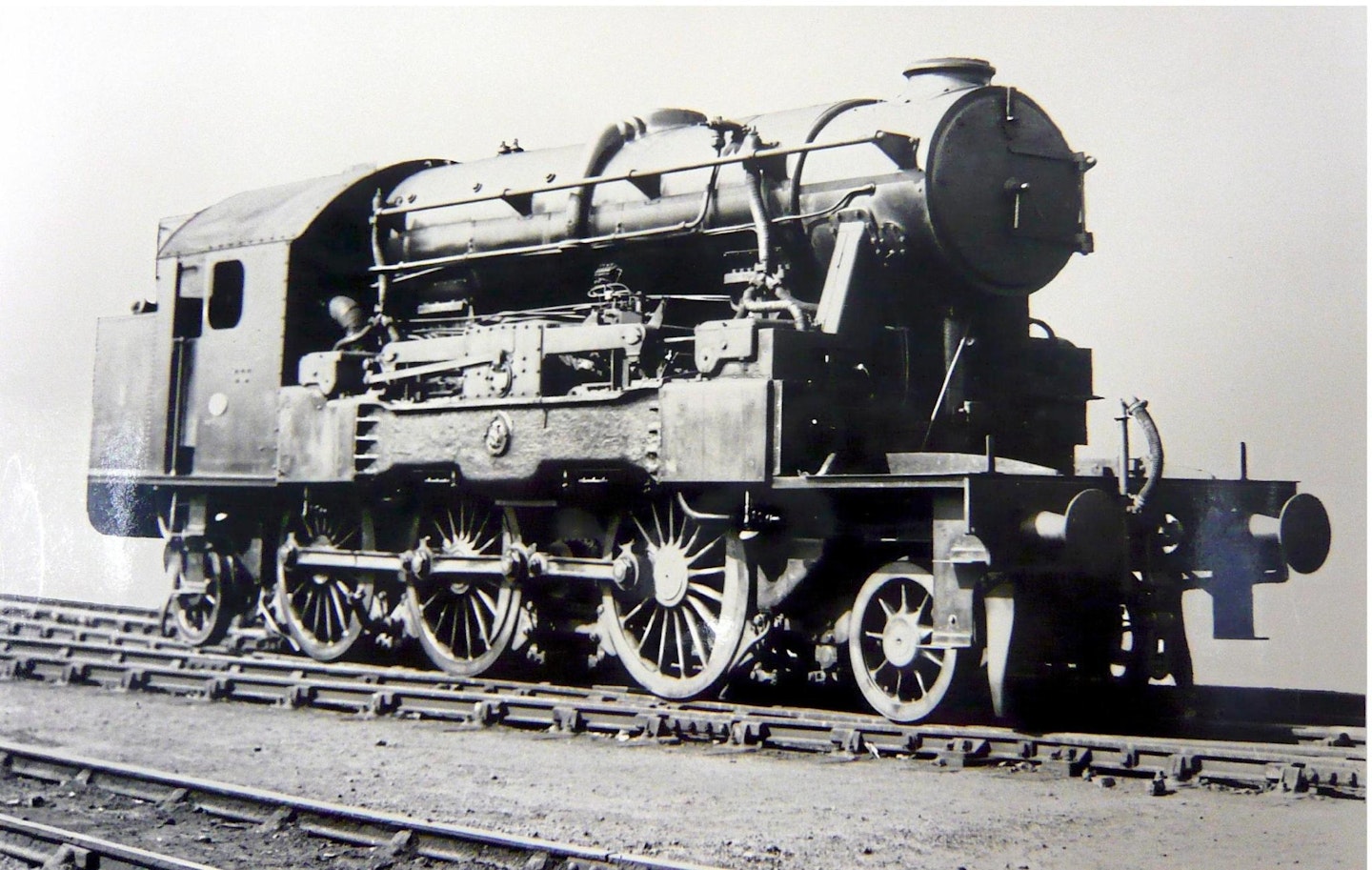
Inter-war developments
Thanks to cheap labour and sitting on millions of tons of high-quality coal, Britain was slow to move to new technologies. However, the Great Depression, rising labour costs, and roads starting to compete with rail led to many railway companies looking to reduce their overheads.
Many British locomotive companies started to investigate the new internal combustion technology. Kerr, Stuart of Stoke-on-Trent built Britain’s first purpose-built standard gauge diesel locomotive in 1929, a narrow-gauge version having been produced the year before. Happily, both have survived into preservation. Kerr, Stuart advertised its revolutionary new products as labour and cost-saving giving, in the words of one of its advertising brochures “fifteen shillings change” from every pound. Metropolitan Vickers, in association with British Thomson-Houston, built the first diesel-electric locomotives in Britain in 1932 for the Ford Motor Company, the same year the Hunslet Engine Company of Leeds produced its first diesel-mechanical shunters for the LMS. Other longstanding Leeds engine builders such as Hudswell, Clarke and John Fowler were also quick to adapt to the new technology.
But while diesel locomotives were considered suitable for shunting, due to their low speed and that the technology was still unproven, Kitson & Co. of Leeds decided to perhaps hedge its bets and developed a wholly unique hybrid steam-diesel locomotive which combined two tried-and-tested technologies – a locomotive it hoped would have an application outside of the goods yard, and be able to run on the main line.
Yet, as the company’s Colonel Kitson Clark noted, irrespective of the transmission used – hydraulic, mechanical, or electric – the steam engine had one major advantage: it could deploy maximum torque upon starting. That torque, however, drops off as the locomotive and its train accelerate. Conversely, the internal combustion engine is at its most efficient when running constantly at its ideal load and speed. In other words, both types of propulsion had major advantages and disadvantages. The Kitson-Still was designed to unite the best of steam, and the best of diesel into a unique hybrid machine.
Kitson & Co. was begun in a converted mill in Hunslet, Leeds, in September 1837 by James Kitson, Charles Todd, and David Laird. Kitson and Todd were both alumni of the Round Foundry in Leeds, which built the first commercially successful locomotives for the Middleton Railway in 1812.
Under the guidance of James Kitson and later his second son – another James, later Lord Airedale – the firm was always ready to diversify its portfolio building steam trams and railmotors. It also specialised in the articulated Kitson-Meyer, a rival to the mighty Beyer, Garratt. But, unlike its neighbours in South Leeds, Kitson didn’t really investigate the possibilities of internal combustion. After the First World War, the firm saw a huge decline in orders for steam locomotives and, while it had sufficient orders to stay afloat, these were difficult times for Colonel Kitson Clark. It is likely that the Kitson-Still demonstrator was seen as the saviour for the firm, but it was also the straw which broke the camel’s back.
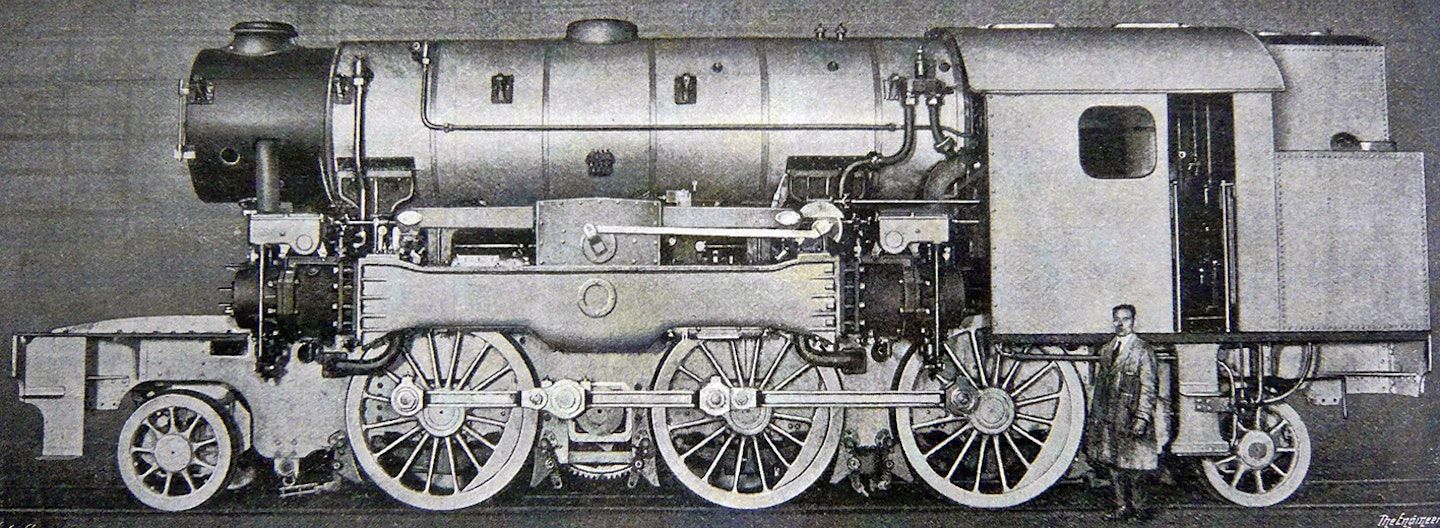
“It is likely that the Kitson-Still demonstrator was seen as the saviour for the firm, but it was also the straw which broke the camel’s back”
A steam/diesel hybrid
The basis of the Still engine was to overcome the poor power-to-weight ratio suffered by many early diesel engines. Steam would start the engine, and act as a booster when needed, but the main fuel was diesel, which could present cost savings compared to a conventional engine of either type.
In other words, it had twin advantages of being able to deliver maximum torque at starting (thanks to steam) and change over and run on diesel with the engine running at its optimum speed and load. The Still hybrid thus offered a way forward at a time when steam was, if not dying, then starting to lose its edge and the new diesel technology was still untested and suffering from reliability issues.
The Still hybrid engine used double-acting pistons, one side operated by diesel fuel and the other side by steam. The engine was started using steam, and once running, diesel was injected into the diesel side of the cylinder, the steam supply shut off and operated on diesel alone. The engine had been patented in 1917 by William Still and announced to the technical press two years later. In the original version, waste heat from the diesel engine exhaust, and hot water from cylinder water jacket was used to boil the water to generate steam, doing away with the need for a separate boiler and firebox.
The engine was put into commercial production and found use as a marine application powering vessels of the Blue Funnel Line built in 1924 and 1928 respectively. Although their builders, the Scotts Shipbuilding & Engineering Company of Greenock, had promised cost-saving through the use of the new technology, the requirement to carry marine engineering officers certified with both steam and diesel engine qualifications – meaning extra crew members and wages – and the extra complexity with consequent higher maintenance costs offset the fuel savings. Thus, after a short while, conventional diesel engines were later installed in their place. At this point, warning bells should have started to ring.
But unheeded they went. In 1926, Kitson & Co. saw potential for the Still engine in a railway setting. The resulting locomotive would be technically brilliant but, to paraphrase George Stephenson, used “too much ingenuity.”
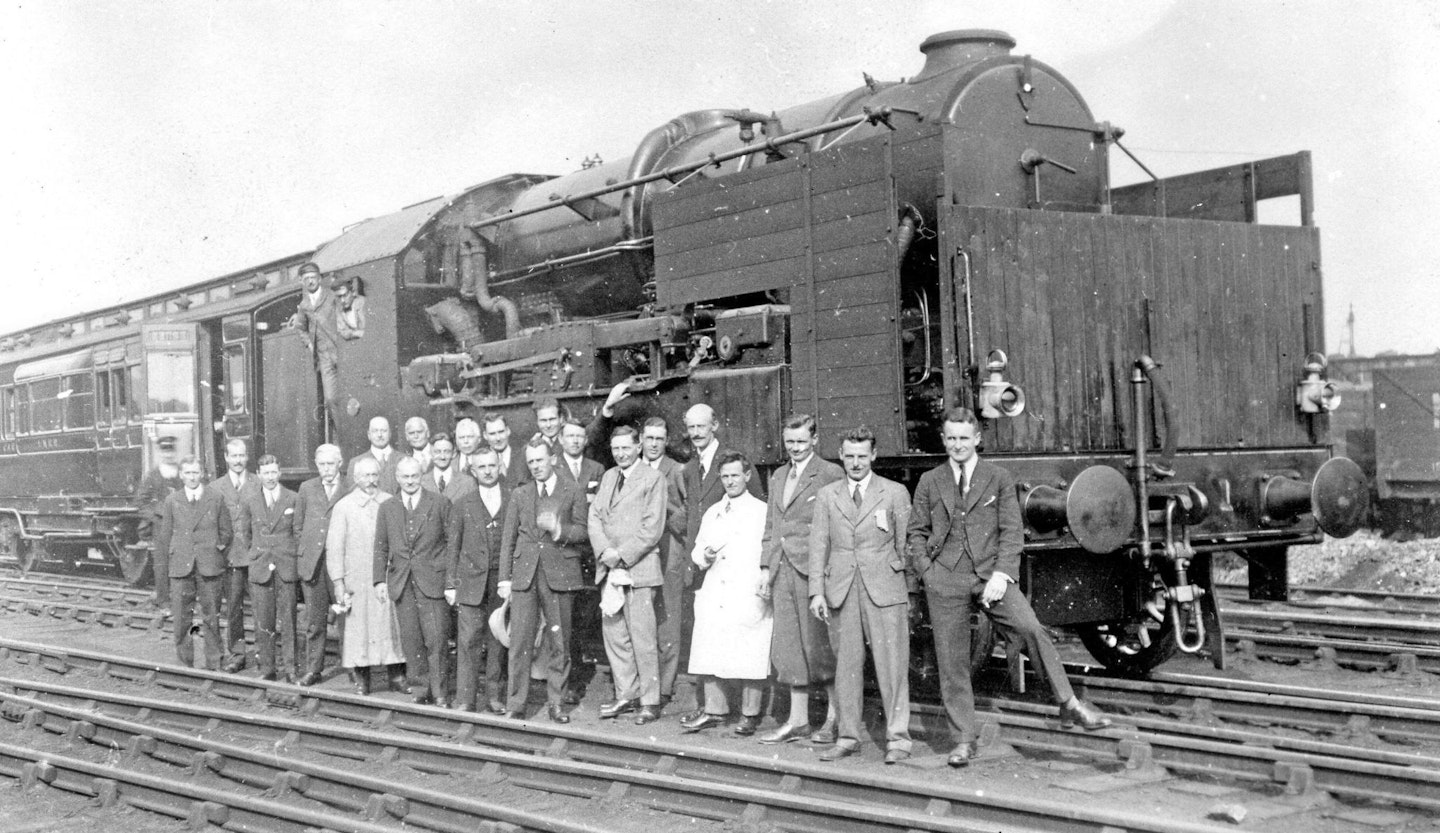
The Kitson-Still project was led by Colonel Kitson Clark, who took a deep personal interest in the project. To assess the Still engine, one was purchased and installed in the machine shop at the Airedale foundry. This test bed was inspected by several notable engineers during the development period, including Sir Nigel Gresley who also showed great interest in it.
This was not the first time that a Still engine had been studied for railway use. Former LNWR CME H.P.M. Beames of the LMS had, in 1920, investigated the Still engine as a possible locomotive power-plant, but financial and other constraints meant the company was unable to fully look into the project.
The Kitson-Still locomotive was in steam parlance a 262T, but perhaps could equally be described as a 1-C-1. Propulsion was via an eight-cylinder horizontal engine with the cylinders arranged in two banks driving a central crankshaft. Gears, a layshaft, and coupling rods transferred power to the three driven axles. Steam was supplied from a small-diameter oil-fired boiler. The exhaust from the diesel engine fed through tubes in the boiler, and the boiler water also circulated through the cylinder cooling jacket. This gave a remarkable high level of thermal efficiency, of around 40%. This was far more than conventional locomotives which could manage around 7% at best, and Kitson was quick to extol the virtues of its new locomotive in terms of cost-saving.
The engine was started using steam from the boiler and, once it had reached around 5mph, could be switched over to diesel. The design meant that the locomotive could be operated as a conventional steam engine using steam in the cylinders, or diesel, or when a ‘boost’ was needed as fully hybrid. Steam was also used to power ancillaries such as the brakes, and the whistle. The maximum design speed was 43mph, but as test crews got to know the locomotive better, speeds of around 55mph were regularly achieved.
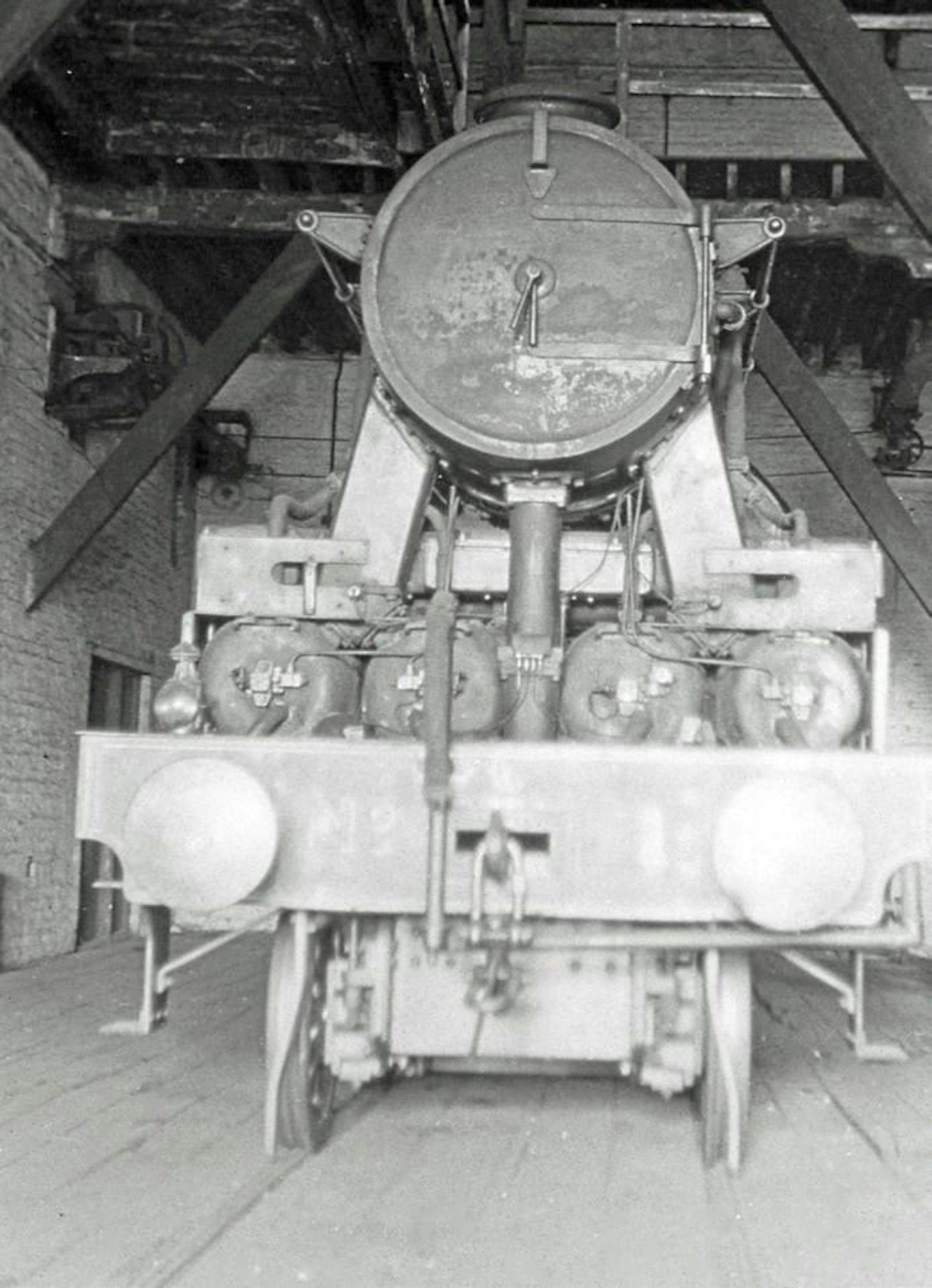
Testing times
Denoted KS1 by Kitson, the Kitson-Still made its first public appearance on April 22 1928 at an exhibition of locomotives and rolling stock organised by the LNER as a charity fundraiser at Leeds New station. Some 21,000 people attended, raising over £540 for the NER ‘Cottage Homes & Benefit Fund.’
After the exhibition, KS1 was put on trial between Leeds and Wakefield, its train consisting of a six-wheel observation saloon and six articulated coaches, given a gross weight of 118 tons behind the drawbar. These trial runs showed that the boiler was sometimes short of steam, and the driver could not judge the position of the crank so that it occasionally stopped top-dead centre. Modifications made at the Airedale Foundry were designed to cure this problem and the boiler pressure was raised from 180lb/sq. in to 200lb/sq. in.
Following the completion of this work, KS1 went out on test again, between Darlington and Starbeck, near Harrogate. The LNER dynamometer car was sent with it to record its performance: test runs on August 8/9 and 14/15 1928 were to assess oil and water consumption. Further runs were made on September 24 and 28, and October 1/2 to assess its reliability with loads which were progressively increased from 183 tons (including the dynamometer car) to 403 tons. It managed to restart this load on a 1in33 gradient from a signal stop.
The LNER report on these test runs shows that KS1 had a higher fuel consumption than Kitson had hoped, or as demonstrated from stationary test runs on rollers at the Airedale foundry. The high fuel consumption led the LNER to carry out rolling resistance tests on the locomotive, by pulling it ‘dead’ behind the dynamometer car which concluded that it had a much higher rolling resistance than a contemporary steam locomotive or diesel-electric locomotive: “This severe handicap, combined with the poor boiler performance, accounted for the inadequate results obtained from this locomotive.”
After this, the locomotive returned to the Airedale Foundry and no further runs were undertaken until 1933. After further modification, KS1 was moved to York. It operated a daily freight service between York and Hull, leaving York at 12.50pm via Market Weighton and then the 4.50pm return working via Selby and Church Fenton. On these trains, the dynamometer car was again used to record results, but still they were not as good as the manufacturer had hoped for. Despite this, it was found to consume about a fifth of the fuel (by weight) compared to a typical coal-burning steam locomotive. In its marketing and development, Kitson planned to target those countries with good oil supplies but little or no coal.
But things for Kitson were looking bleaker and bleaker. Development of the Kitson-Still locomotive had taken the best part of 10 years and had consumed resources, both financial and technical, that the firm could little afford to waste. The project grew ever-more complicated as the firm tried to make the locomotive work, pinning all its hopes on the experimental machine. Finally, in 1934, the receivers were called in and, after 97 years, time was called on Kitson & Co.
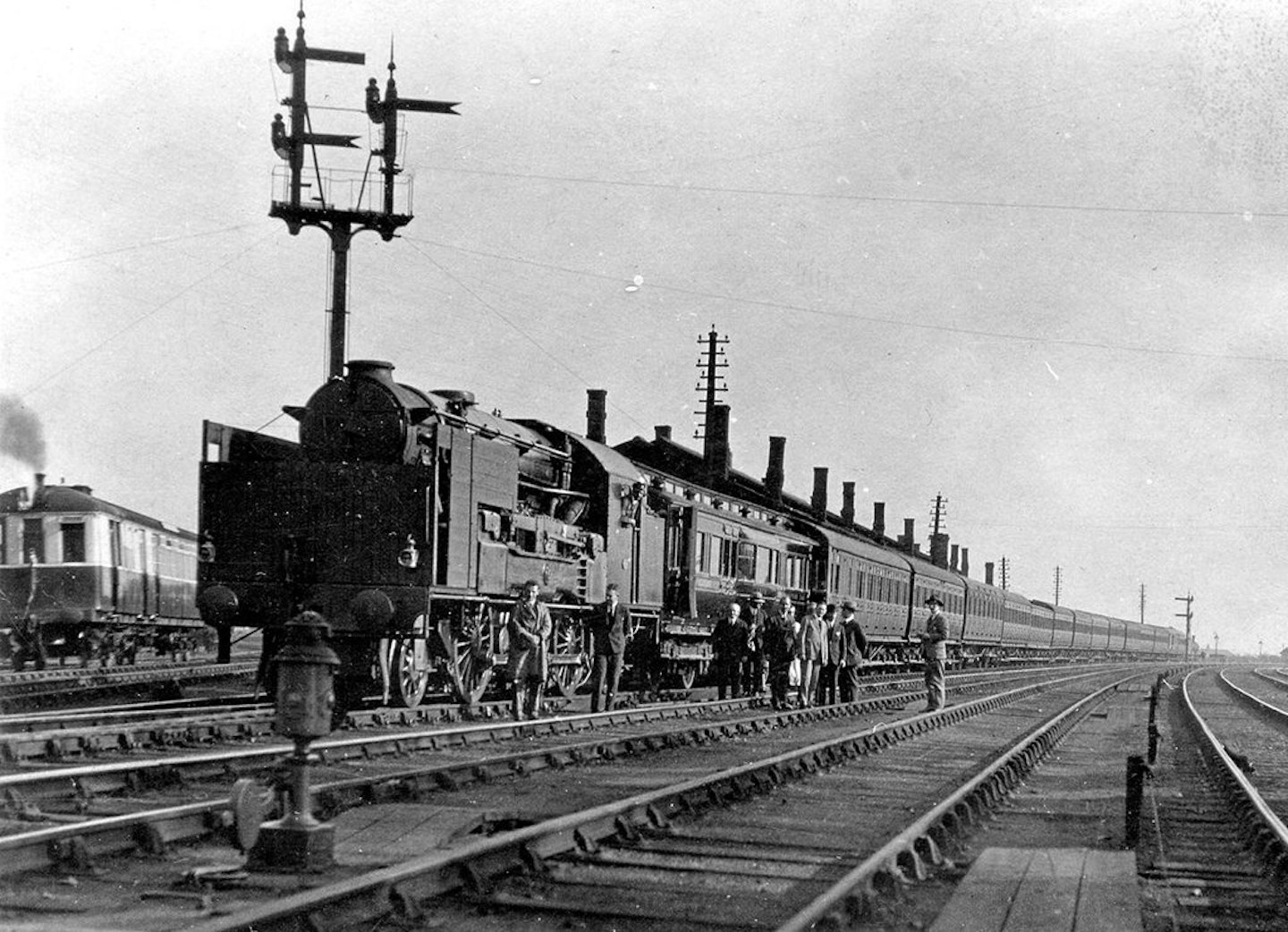
KS1 – a failure or not?
The Kitson-Still locomotive was just too complicated. And, like many other internal combustion locomotives suffered from a poor power-to-weight ratio, weighing 88.4 tons, and its power output of 800bhp under diesel power and 1,000bhp under steam and with a combined output of 1,300bhp compared poorly with both conventional steam locomotives and the rapidly evolving diesel. It was heavy, weak and expensive. Even if the project had succeeded, given the cost and complication of the locomotive, it would be unlikely that the oil-rich coal-poor colonies and territories for which Kitson & Co. intended it would have been able to afford or maintain them for very long. A more robust, simple design would have been preferable.
Unlike many of its contemporary prototype and experimental locomotives, in traffic KS1 never failed mechanically and always completed its journeys. The biggest problem with the locomotive was its weight. It was too heavy and too well-engineered for purpose, and this ate into the energy output, rendering any savings through extra efficiency redundant. Had the weight been less but with the same power output, the savings would have been larger and the locomotive more attractive to potential customers.
The engine also suffered from being built at the wrong time. The Great Depression took its toll on all businesses in the 1930s and development of the Kitson-Still certainly slowed, with the locomotive being effectively being stored for five years, from 1928-1933. This gave other manufacturers and railway companies the time needed to develop other forms of internal combustion locomotive, which gave them the advantage over the Kitson-Still.
As railway historian Ken Hoole wrote: “Unfortunately, its protracted trials delayed its development long enough to enable the ordinary diesel locomotive to gain ground and the Kitson-Still engine was put aside, to become another memory.” The final word perhaps goes to Andy Hardy: “With the development of other forms of internal combustion locomotive and transmission systems, it was obvious that the Still system was not an economic one to pursue. However, the locomotive must be considered a success. The technology was investigated and developed to build a working locomotive, one that undertook both test and commercial trains without fuss or failure.”
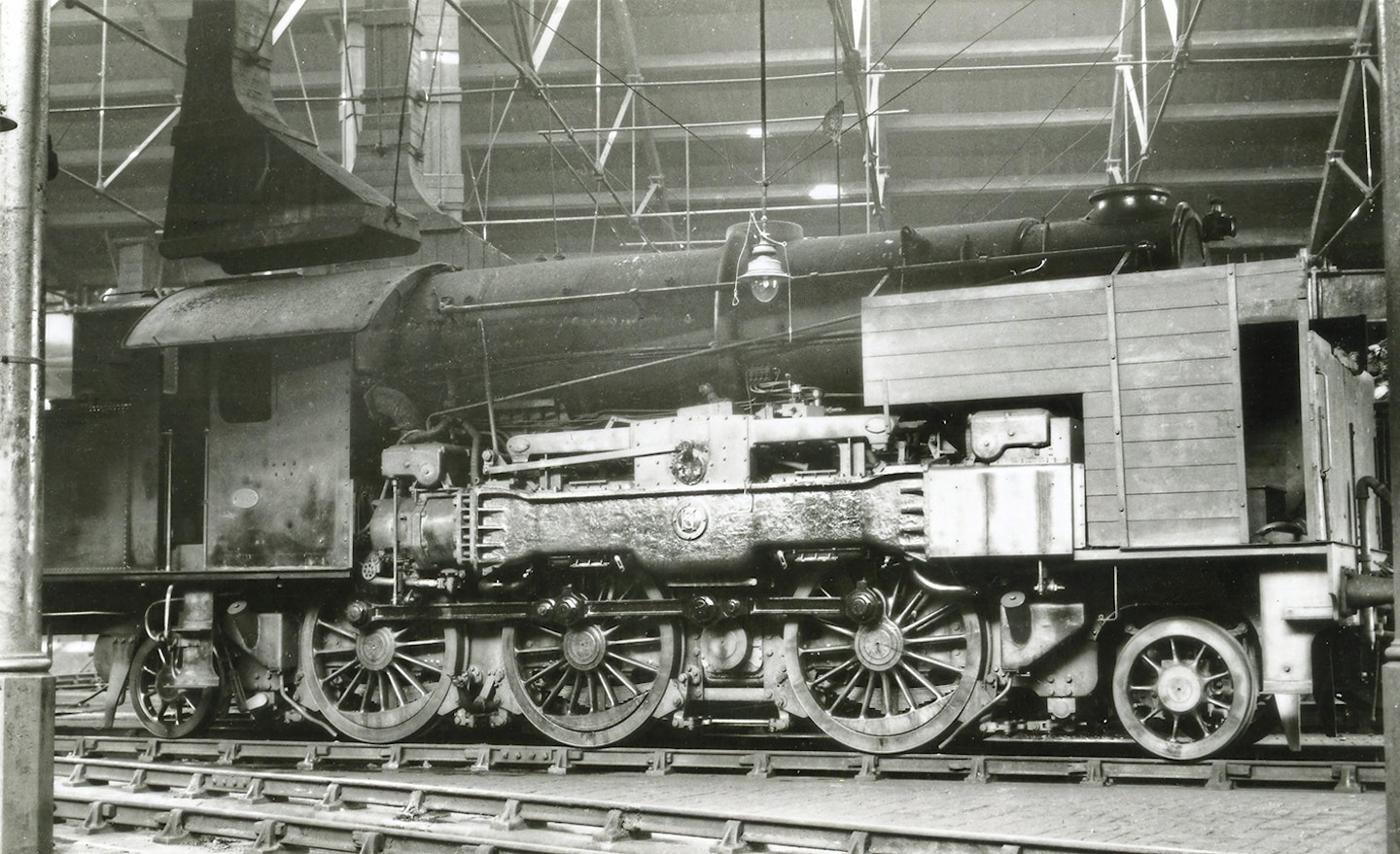
“The Still engine in both railway and marine application was too complicated, and this complication ate up any possible cost savings”
After KS1
But the demise of Kitson & Co. wasn’t quite the end of the story for the Still hybrid locomotive. One Captain Durtnall took out a patent from a similar hybrid engine developed in Italy which was trialled in Britain in 1923 on a demonstrator built by Hawthorn, Leslie. It was not a success, and the chassis was used as the basis for a conventional 060ST, Stagshaw, now preserved at the Tanfield Railway.
Schneider Frères in France proposed a 480 version at the same time Kitson were building KS1 in Leeds. It was 45 feet long overall and weighed in at 90 tonnes. Unlike the Kitson-Still, it used a two-stroke rather than four-stroke cycle and had at first four, later six, cylinders. Its starting characteristic was improved by admitting steam on both sides of the piston, and had a maximum design speed of 90kph. But despite its size, its power output was only a meagre 1,250hp. So, as with the Leeds example, it never entered revenue-earning service, something of an éléphant blanche. Various attempts to utilise the technology were made in the USSR, Switzerland and the USA, but none of them were a success.
The Kitson-Still locomotive was a brave attempt to revitalise a dying firm. Kitson & Co. – like many other firms after it, such as Beyer, Peacock – stuck with steam for too long. They failed to innovate and embrace new technology.
And, when they did, jumped on the wrong bandwagon. The Still engine in both railway and marine application was too complicated, and this complication ate up any possible cost savings. It was heavy, underpowered and expensive. While, at the time, it looked like a viable future, the slow pace of development of the Kitson-Still locomotive compared with the rapid evolution of the diesel locomotive (either with mechanical or electric drive) meant that it would always be obsolete no matter how well Kitson got it to work. It was completed at a time when the LMS was trialling diesel shunters from multiple builders and when the LNER was experimenting with Armstrong-Whitworth’s diesel electric 1-Co-1main line locomotive.
The writing was on the wall for steam globally: France had electrified in 1923; America and Germany began to dieselise in the 1930s, challenging steam’s monopoly, and petrol-electric railcars were also in use. The Kitson-Still remains a unique example of ingenuity by one of Britain’s oldest locomotive-building firms.
Each issue of Steam Railway delivers a wealth of information that spans the past, present and future of our beloved railways. Featuring stunning photography, exclusive stories and expert analysis, Steam Railway is a collector's item for every railway enthusiast.
Choose the right subscription for you and get instant digital access to the latest issue.

